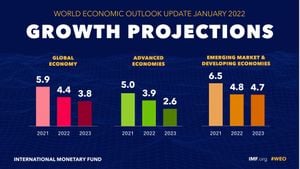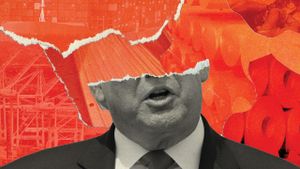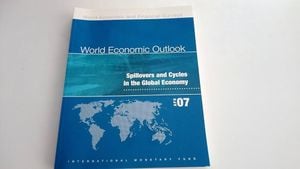With the 2024 U.S. Presidential Election drawing closer, the political street buzz is palpable and the stakes are high. This year's election saw former President Donald Trump re-emerging onto the political scene, triumphing over Vice President Kamala Harris. Trump's whirlwind of announcements following his victory has kept the public glued to their screens, especially as he rapidly fills key Cabinet positions and major government roles. Critics noted some appointments were conventional, such as Senator Marco Rubio’s nomination for Secretary of State. Still, others raised eyebrows, like Rep. Matt Gaetz's expected pick for Attorney General, igniting concerns not just among Democrats but even within his own party.
The backdrop to the 2024 election is also shaped by waves of voter engagement and new dynamics playing out on social media. Platforms like Facebook, Twitter, and TikTok have become battlefields for messages, misinformation, and political ads, reflecting the intense political climate. Elise Silva and Beth Schwanke, experts at the University of Pittsburgh's Institute for Cyber Law, Policy, and Security, stressed the importance of tracking social media policies affecting elections. They pointed out how these platforms toggle between transparency and ambiguity, often exacerbated by political events.
Early voting began to see significant turnout, with states implementing expanded voting access and counting measures. Reports from election trackers showed fluctuated figures, leaving voters anxious yet hopeful. A segment of the electorate, particularly younger voters, has been increasingly turning to digital platforms for information, showing the clear impact of the internet on today’s election strategies. Each click could sway opinions and potentially impact outcomes.
With such active participation, the political machinery is not only responding to voters but also confronting challenges posed by various external influences. Issues surrounding voter integrity, misinformation campaigns, and foreign interferences have kept election officials on their toes. For example, organizations like the Center for Democracy and Technology have been working to familiarize the public with the intricacies of political advertising policies across platforms, helping to demystify their practices and raise awareness about the effects of misinformation.
Simultaneously, opponents of Trump are ensuring their voices resound through the airwaves and digital channels, rallying against perceived vulnerabilities of the current administration's policies. The Democratic Party, under Harris, has emphasized the notion of inclusive governance, focusing on topics such as climate change and health care reforms, hoping to regain traction among dissatisfied voters. They’re counting on the midterm results to bolster their arguments and highlight contrasting views on economic and social issues.
General sentiment among analysts suggests we are heading toward one of the most electronically entwined and unpredictable elections yet. Each party gears up for aggressive campaigns, utilizing all available platforms to reach disparate audiences. Across the board, advertisements will seek to resonate particularly with the youth—a demography proving to be more vocal with every passing election.
Election results from races already completed offer insights, as seen with California's 45th congressional district where only 349 votes separated Michelle Steel from Derek Tran. This razor-thin margin highlights the intensity and division of opinion present among voters these days, underscoring the fluid nature of political allegiances.
It's hard to ignore social media's undeniable influence. Platforms have begun introducing tools to combat misinformation and bolster public awareness of election processes. Facebook, for example, has enhanced its Voter Information Center to guide users to accurate election data. Twitter and YouTube, too, have adopted similar efforts, displaying educational materials coupled with authoritative content to navigate voters through the communication storm leading up to November.
Despite these steps, uncertainty looms as some analysts remain wary of the engagement levels decreasing as the public grows fatigued with headline after headline. Creating informative but engaging content becomes ever more important; otherwise, the message risks getting lost. Basic details about when and how to vote can easily slip through the cracks, leaving many potential voters feeling disconnected from the process.
Tracking these dynamics not just speaks to election integrity, but also sheds light on the broader narrative of American democracy as it adapts to modern technology. Silva and Schwanke's take on the evolution of social media policies provides clarity on how election timelines have shaped platforms’ approaches through various election cycles since 2016. From initial crackdowns on disinformation following foreign interference attempts to recent less stringent policies on claims about election integrity, the shifts have been noteworthy.
Observing this evolution offers researchers and the public valuable lessons about how swiftly new electoral norms can change. The balancing act between fostering dialogue and quelling harmful rhetoric remains delicate. While platforms deal with potential blowback and public scrutiny, open data and transparent practice stand as good practices for ensuring trust.
Looking toward election day, anticipation bubbles as both parties prepare for their final campaigns. Trump’s return to the spotlight has reignited both support and opposition, influencing how each campaign will be framed. For now, election officials, political strategists, and everyday citizens alike await November, ready to witness the results of their choices playing out on both national and local stages.



